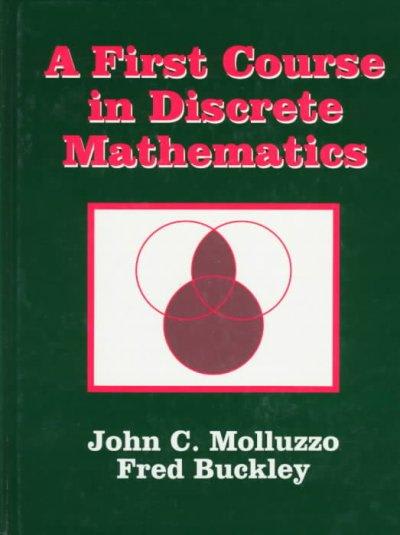Question
A random sample of 250 undergraduate students from a large university was found to contain 65 freshmen, 60 sophomores, 67 juniors, and 58 seniors. (a)
- A random sample of 250 undergraduate students from a large university was found to contain 65 freshmen, 60 sophomores, 67 juniors, and 58 seniors.
(a) What proportion of undergraduate students are freshmen?:
(b) What is the risk of being a sophomore?:
- A random sample of 100 freshman showed 9 had satisfied the university mathematics requirement and a second random sample of 50 sophomores showed that 10 had satisfied the university mathematics requirement.
Enter answers below rounded to three decimal places.
(a) The relative risk of having satisfied the university mathematics requirement for sophomores as compared to freshmen is:
(b) The increased risk of having satisfied the university mathematics requirement for sophomores as compared to freshmen is:
- Of first-time college students who matriculate to a certain university, the odds in favor of having graduated in the top 25 percent of their high school class are 2.72 to 1. Of transfer students who matriculate to the same university, 0.75 proportion graduated in the top 25 percent of their high school class.
(a) For first-time college students, the proportion who graduated in the top 25 percent of their high school class is (rounded to three decimal places):
(b) For transfer students, the odds in favor of having graduated in the top 25 percent of their high school class are ___to 1.
(a) A study was performed to examine the personal goals of children in elementary school. A random sample of students was selected and the sample was given a questionnaire regarding achieving personal goals. They were asked what they would most like to do at school: make good grades, be good at sports, or be popular. Each student's sex (boy or girl) was also recorded. If a contingency table for the data is evaluated with a chi-squared test, what are the hypotheses being tested?
A.The null hypothesis that there is no relationship between personal goals and sex vs. the alternative hypothesis that there is a positive, linear relationship.
B.The null hypothesis that sex and personal goals are not related vs. the alternative hypothesis that sex and personal goals are related.
C.The null hypothesis that the mean personal goal is the same for boys and girls vs. the alternative hypothesis is that the means differ.
D.The null hypothesis that boys are more likely than girls to desire good grades vs. the alternative that girls are more likely than boys to desire good grades.
E.None of the above.
(b) A2 statistic provides strong evidence in favor of the alternative hypothesis if its value is
A.exactly 1.96
B.a large negative number.
C.a large positive number.
D.close to 0.
E.close to 1.
(c) The variables considered in a chi-squared test used to evaluate a contingency table
A.are categorical.
B.are normally distributed.
C.can be averaged.
D.have rounding errors.
E.have small standard deviations.
Step by Step Solution
There are 3 Steps involved in it
Step: 1

Get Instant Access to Expert-Tailored Solutions
See step-by-step solutions with expert insights and AI powered tools for academic success
Step: 2

Step: 3

Ace Your Homework with AI
Get the answers you need in no time with our AI-driven, step-by-step assistance
Get Started


